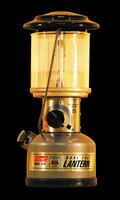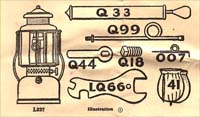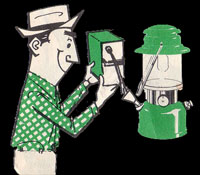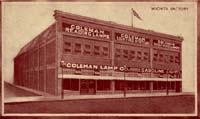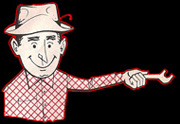 How Pressure Appliances Work
How Pressure Appliances Work
Coleman® stoves, lanterns, lamps and irons use the same basic principles of operation, and have since the early 1900s. Pressure devices place and maintain their fuel under pressure, convert that fuel to a gas vapor and then control the manner and rate at which it burns.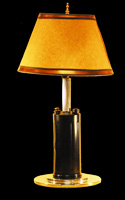
To create light, a lamp or lantern applies an intense flame to a mantle that incandesces (illuminates) when heated. To create heat, a stove or burner uses the Bunsen effect to produce a small but very hot flame.
To help you understand the process, I have broken it down into three parts.
Part One: Under Pressure. How the appliance builds and maintains pressure on the fuel source.
Part Two: Making Gas. How it delivers the pressurized fuel through a heating chamber where it is vaporized.
Part Three: Making Light. How it mixes vapor with air and burns it to produce light.
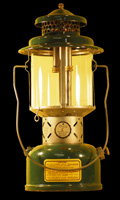 This discussion focuses on a Coleman® lantern, but it applies to pressurized lamps, stoves, heaters and irons, to include those made by other manufacturers. Differences between lanterns and stoves are covered in Part Four: Making Fire.
This discussion focuses on a Coleman® lantern, but it applies to pressurized lamps, stoves, heaters and irons, to include those made by other manufacturers. Differences between lanterns and stoves are covered in Part Four: Making Fire.
If you are new to pressure appliances, I recommend you take a few minutes to become familiar with them by reviewing an “exploded parts” diagram. Click here for a lantern graphic, or here for a stove graphic that can be used as reference for our discussion.
The graphics in this portion of the website can be enlarged. Simply click on the figure and a new window will open with a larger one.
![]() Part I: Creating and maintaining pressure
Part I: Creating and maintaining pressure
![]() Part II: Heating the fuel to create a gas vapor
Part II: Heating the fuel to create a gas vapor
![]() Part III: Igniting the vapor to luminesce the mantle
Part III: Igniting the vapor to luminesce the mantle
![]() Part IV: Talking about stoves & burners
Part IV: Talking about stoves & burners


